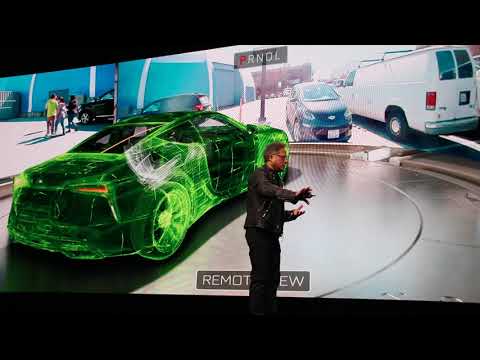Nvidia – Blurring the Lines Between Virtual Reality and Real Life
Blurring the lines between real life and virtual reality has never seem so close and possible. Nvidia combines its Virtual Reality Holodeck application with Self Driving Cars, in order for a human to be able to take over a vehicle remotely, in the event of a problem.
According to TechCrunch, the driver was sitting on the stage of the convention center wearing an HTC Vive and seated in a cockpit-like car with a steering wheel. Using Nvidia’s Holodeck software, a car was loaded. Then, a video feed appeared showing a Ford Fusion behind the convention center. The driver in VR had seemingly complete control over the vehicle and managed to drive it, live but slowly, around a private lot. He navigated around a van, drove a few hundred feet and parked the car. The car was empty the whole time.
Inside the simulation, users could grab the car’s steering wheel, or watch it explode into its component parts. According to VentureBeat, the Holodeck will be available more widely as a demo in September.
Moreover, according to enterprisetech.com, Nvidia revealed how it’s planning to use virtual reality technology to accelerate the testing of autonomous vehicles. The new offering, called Drive Constellation, could dramatically improve the capability to test certain driving conditions, such as snow or blinding light, that can be hard to get in the real world.
Nvidia will use Drive Constellation offering to scale up the testing of the algorithms that autonomous vehicles use to make decisions. The solution, which is expected to be available in the third quarter, will combine two main products.
The first component in Drive Constellation will be the company’s Nvidia Drive Sim software, which simulates the data emitted from sensors used in an autonomous vehicle (AV), including visual cameras, thermal cameras, radar, and LIDAR. The second component will be Nvidia Drive Pegasus, the GPU-powered computer that actually processes the AV’s sensor data in real time.
Together, the components will allow Nvidia customers, such as Google and Uber, to significantly ramp up the number of miles driven in cyberspace before putting the AV on the road for a real-world test.
